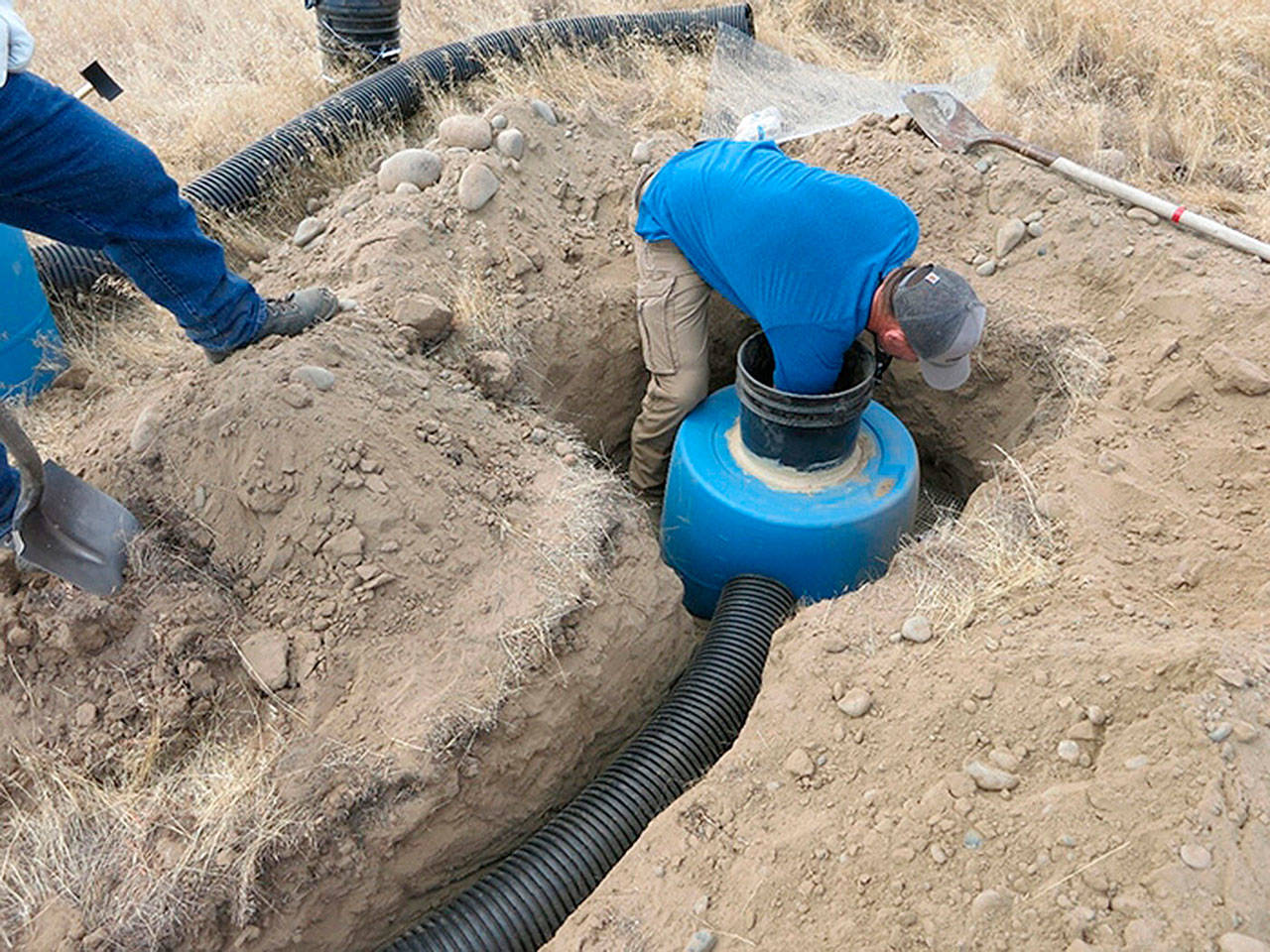By Annette Cary
Tri-City Herald
RICHLAND — Hanford employees have taken on the traditional work of ground squirrels, providing housing for burrowing owls.
Burrowing owls, which are a species of concern in Washington state because of their declining numbers, have traditionally taken over the holes made by ground squirrels to create their nests.
But fewer ground squirrels at the nuclear reservation in recent years — for reasons that are not clear — has meant fewer homes for burrowing owls.
Most of the state’s burrowing owl population is in Benton, Franklin, Grant and western Adams counties. It makes the Hanford nuclear reservation’s 580 square miles of shrub steppe habitat important to their survival as other Mid-Columbia wildlands give way to development.
Although Hanford produced much of the plutonium for the nation’s nuclear weapons program, industrial sites are islands of development among the grass and brush of the site.
In 2013, Hanford officials knew of 40 to 50 active owl burrows at the portion of the site managed by the Department of Energy. By 2017 that had dropped to 14 active burrows.
Not only were owls not finding holes for new burrows, but older burrows were deteriorating.
“Without enough nesting habitats, the burrowing owl population would continue to decline,” said April Johnson, who leads the ecological monitoring program for DOE contractor Mission Support Alliance, owned by Leidos and Centerra Group.
DOE and Mission Support Alliance have been installing new burrows made out of half of a 55-gallon drum with six-inch plastic pipe serving as a tunnel to connect the burrow to the surface of the ground.
The design makes a larger nesting space that should be easier to monitor and maintain than previous man-made burrows, helping Hanford officials track a hoped-for population recovery.
Twenty-five new burrows have been installed near the Columbia River and 20 old burrows have been replaced.
As environmental cleanup of Hanford continues, there needs to be a focus on species recovery, said Annabelle Rodriguez, of the DOE Richland Operations Office.
“We believe these new nesting habitats will help the population recover, while restoring ecological integrity at Hanford,” she said.
If you’d like to see a burrowing owl, watch for them in Mid-Columbia areas of natural grass and brush near their burrow or on a fence post. Unlike most owls, they are active in the daytime.
They measure 9 to 11 inches tall on long bare legs and may bob up and down as they stand.


